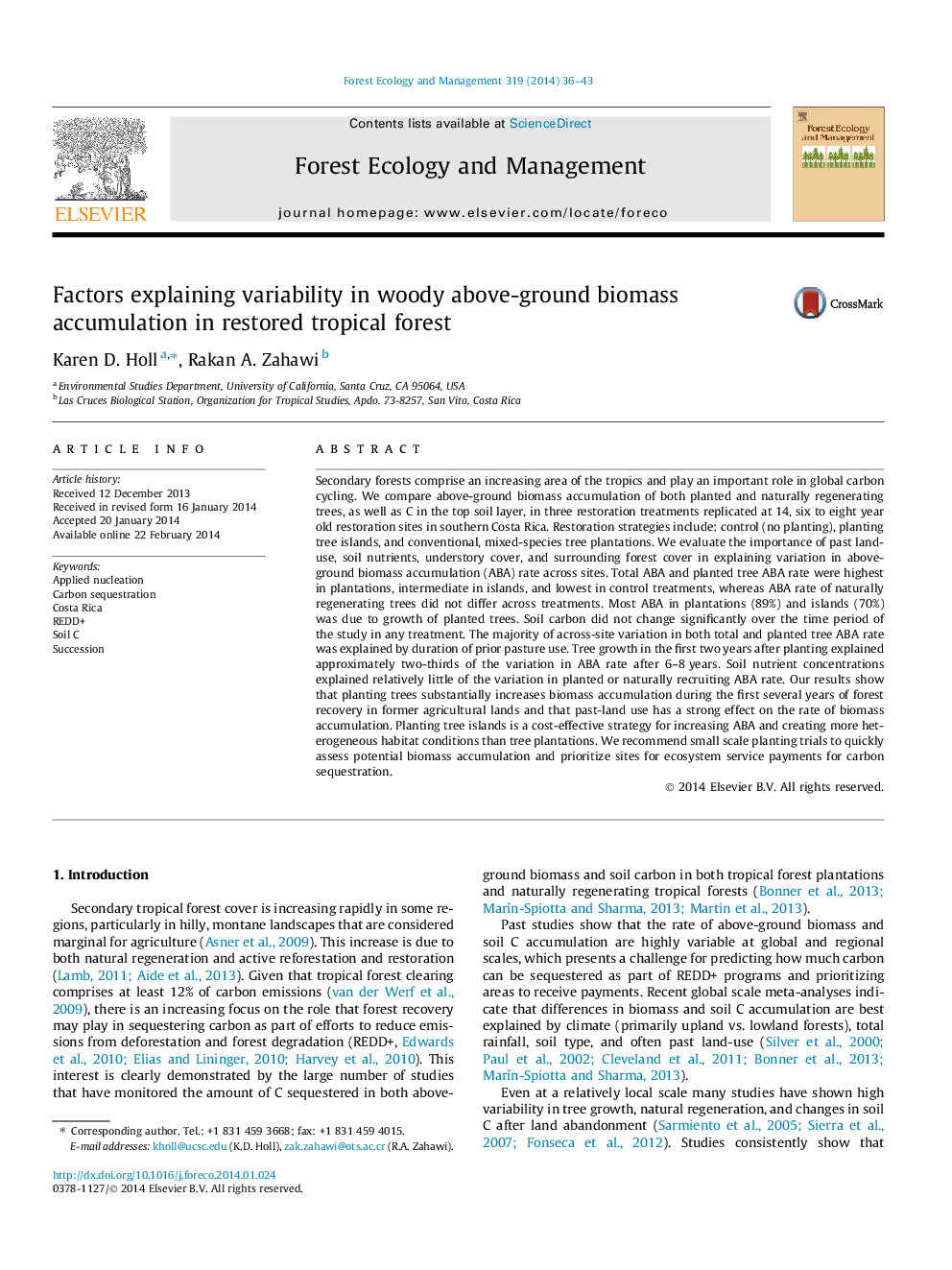| کد مقاله | کد نشریه | سال انتشار | مقاله انگلیسی | نسخه تمام متن |
|---|---|---|---|---|
| 86650 | 159202 | 2014 | 8 صفحه PDF | دانلود رایگان |
• We compared above-ground biomass accumulation (ABA) in tropical forest restoration.
• ABA rates were plantations > island tree plantings > control treatments.
• Duration of prior pasture use best explained differences in planted tree ABA rate.
• Tree height after two years was a strong predictor of planted tree ABA rate.
• Soil nutrient concentrations explained minimal differences in ABA rate.
Secondary forests comprise an increasing area of the tropics and play an important role in global carbon cycling. We compare above-ground biomass accumulation of both planted and naturally regenerating trees, as well as C in the top soil layer, in three restoration treatments replicated at 14, six to eight year old restoration sites in southern Costa Rica. Restoration strategies include: control (no planting), planting tree islands, and conventional, mixed-species tree plantations. We evaluate the importance of past land-use, soil nutrients, understory cover, and surrounding forest cover in explaining variation in above-ground biomass accumulation (ABA) rate across sites. Total ABA and planted tree ABA rate were highest in plantations, intermediate in islands, and lowest in control treatments, whereas ABA rate of naturally regenerating trees did not differ across treatments. Most ABA in plantations (89%) and islands (70%) was due to growth of planted trees. Soil carbon did not change significantly over the time period of the study in any treatment. The majority of across-site variation in both total and planted tree ABA rate was explained by duration of prior pasture use. Tree growth in the first two years after planting explained approximately two-thirds of the variation in ABA rate after 6–8 years. Soil nutrient concentrations explained relatively little of the variation in planted or naturally recruiting ABA rate. Our results show that planting trees substantially increases biomass accumulation during the first several years of forest recovery in former agricultural lands and that past-land use has a strong effect on the rate of biomass accumulation. Planting tree islands is a cost-effective strategy for increasing ABA and creating more heterogeneous habitat conditions than tree plantations. We recommend small scale planting trials to quickly assess potential biomass accumulation and prioritize sites for ecosystem service payments for carbon sequestration.
Journal: Forest Ecology and Management - Volume 319, 1 May 2014, Pages 36–43
